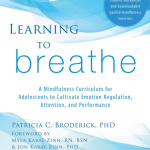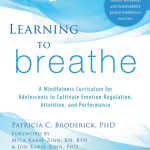This wonderful link and list are from the fabulous people at Edutopia!
Edutopia link
The Big List of Educational Grants and Resources
Get
a roundup of educational grants, contests, awards, free toolkits, and
classroom guides aimed at helping students, classrooms, schools, and
communities. Check this page weekly to get the latest updates!
Originally Published: December 13, 2013 | Updated: May 7, 2016
Resources by Topic:
Grants
NEW! Earthwatch Institute’s Teach Earth Teacher Fellowships
Deadline: Interest Forms Available Now The Teach Earth program is a travel and expeditionary learning program for U.S.-based educators. Each year, the Earthwatch Institute selects teachers in a variety of subject areas to "work side by side with world-class scientists on field research expeditions around the world." The program is open to all educators, even educators without scientific backgrounds.Prize: Funding for travel and lodging are included.
Dollar General Youth Literacy Grants
Deadline: May 19, 2016 The Youth Literacy Grants are offered to schools, libraries, and non-profits to help struggling readers improve and attain proficiency. The grants supports a range of programs, including new literacy projects, as well as provide funding for new technology and literacy materials.Prize: Grants are available up to $4,000.
NEA Learning and Leadership Grants
Deadline: June 1, 2016 The National Education Association's Learning and Leadership grants help support individuals and groups of educators in their pursuit of professional development. The grants can be used for high-quality professional development, i.e. summer institutes or conferences, or collegial study like mentoring or lesson plan development.Prize: Grants are available for individuals up to $2,000; groups can apply for grants up to $5,000.
Teen Read Week Activities Grants
Deadline: June 1, 2016 Do you have an idea to promote reading among ESL teens? The Young Adult Library Services Association, in partnership with the Dollar General Literacy Foundation, have the perfect grant for you. This year, the association is providing grants to libraries for "innovative reading or literacies programs aimed at the "22 percent of the nation's young who speak a language other than English at home." Programs or activities should align with the theme of this year's October Teen Read Week, "Read for the fun of it!" Plus, the activities should incorporate YALSA's best practices for teaching literacy.Prize: Ten $1,000 grants are available.
Middle School Science School Lab Makeover Challenge
Deadline: June 16, 2016 The Fab School Labs grant program, from the Northrop Grumman Foundation, is offering awards to help make over public middle school science labs. To participate, educators develop a plan for their makeover and create a video of their current lab spaces. Submissions should demonstrate need, what makes your school unique and why it should be chosen, as well as the impact a lab makeover would have.Prize: Five awards of up to $100,000 are available.
Pets in the Classroom Grants
Deadline: Rolling Classroom pets make wonderful learning companions! Educators interested in funding a classroom pet should consider a Pets in the Classroom grant. They are available for K-8 teachers in public and private schools. Grants are "intended to support pets or aquariums in the classroom" and facilitate learning projects centered on caring for pets responsibly.Prize: A variety of small one-time grants are available, including awards for supplies.
>> MORE: Get information on how to find grants.
Contests and Awards
NEW! The Education Youth Video Challenge
Deadline: May 31, 2016 The Education Commission was created last year to help the world develop a plan for achieving the Sustainable Development Goal on Education, which calls for inclusive, equitable and lifelong learning for all. The organization is encouraging young people to offer their ideas by submitting short, 30-second videos that answer one or both of the following questions: How can education best prepared you for the future? What would your ideal school of the future look like?Prize: Six winners will receive $100,000 grants to fund their "education visions for their schools and communities."
NEW! $100,000 Dream Big Teacher Challenge
Deadline: June 30, 2016 Teachers, do you have an innovative idea for helping children and their families in your school community? Yes! The Big Dream Teacher Challenge, from the Farmers Insurance Thank America's Teachers program, is offering support to get your dreams off the ground. A wide range of projects won in 2015, including outdoor education programs, an accessible playground for child with special need, and much more. Submission guidelines and additional information about example projects is available online.Prize: Six winners will receive $100,000 grants to fund their "education visions for their schools and communities."
Engineering for You Video Contest
Deadline: May 31, 2016 This contest, sponsored by the National Academy of Engineering, asks middle school and high school individuals and teams to develop 1- to 2-minute videos focused on mega-engineering, or projects that impact large populations of people. Entries are judged on creativity, the potential impact of the project, and how well participants explain the project's importance. For more details, as well as resources for creating videos, visit the Engineering for You contest page.Prize: Creators of the "Best Overall Video" receive a $25,000 prize. Plus, the top videos in each category, as well as a People's Choice Award winner, receive prizes up to $5,000.
Social Justice Teaching Prize
Deadline: June 1, 2016 This prize -- sponsored by the Lola Stein Institute and THINK magazine -- honors educators who use heritage, culture, or religion "to inspire social responsibility and reach for social justice" with students. To apply, educators must submit an example of original curriculum, in-class projects, or a school-wide initiative that incorporates culture, religion, and heritage and inspires social responsibility in students.Prize: The top prize is a $1,500 award; second place receives $750.
2016 Ocean Awareness Student Art Contest
Deadline: June 13, 2016 The 2016 Ocean Awareness Contest encourages students to create art projects related to this year's theme: Making Meaning out of Ocean Pollution. To participate, students must research and explore one type of ocean pollution, and then create an project that "says something meaningful" about our impact on the health of our oceans. All variety of mediums are welcome including art, film, prose, and poetry.Prize: Awards range from $250 to $1,500.
National STEM Video Game Challenge
Deadline: August 15, 2016 Here's one for the aspiring video game designers in your classrooms. The STEM Video Game Challenge, which was inspired by the President's Educate to Innovate Campaign, encourages middle and high school students "to work as individuals or in teams to design and make original, playable games or written game design documents about any subject." Judges evaluate games based on three game design criteria, and individuals or participating teams can design and build games, or just submit design documents in the design category. A variety of resources, including lesson plans to help teach game design concepts, are available online.Prize: Many prizes are available for students, including a cash award, mentoring opportunities, and lifetime access to Game Mechanic, among other prizes.
>> MORE: Get information about the latest contests and promotions for teachers in our Edutopia discussion group.










Comments (45) (all from the Edutopia article)
Conversations on Edutopia (45) Sign in or register to comment
Thanks for the quick response. I will continue my journey to spread the news :)
Not a member of this Edutopia link? Register.